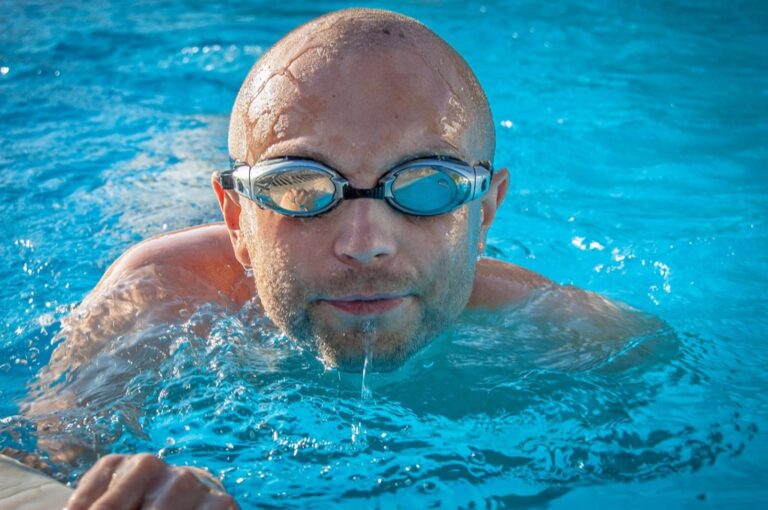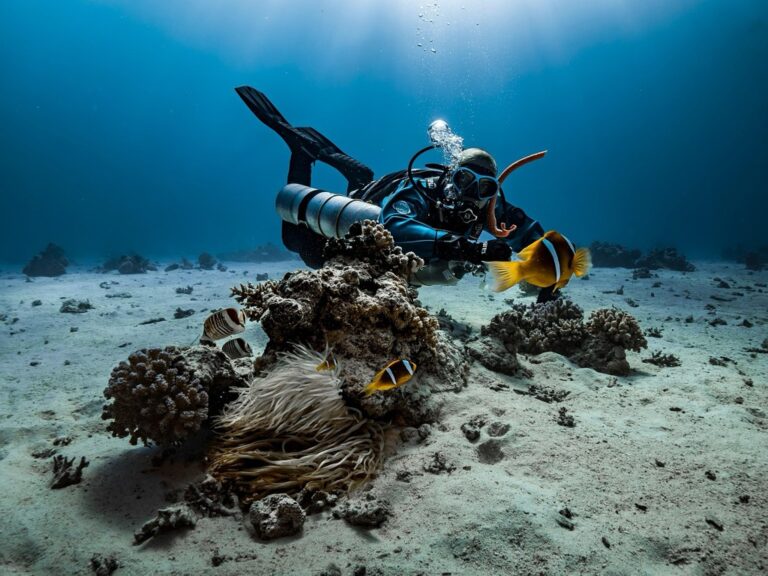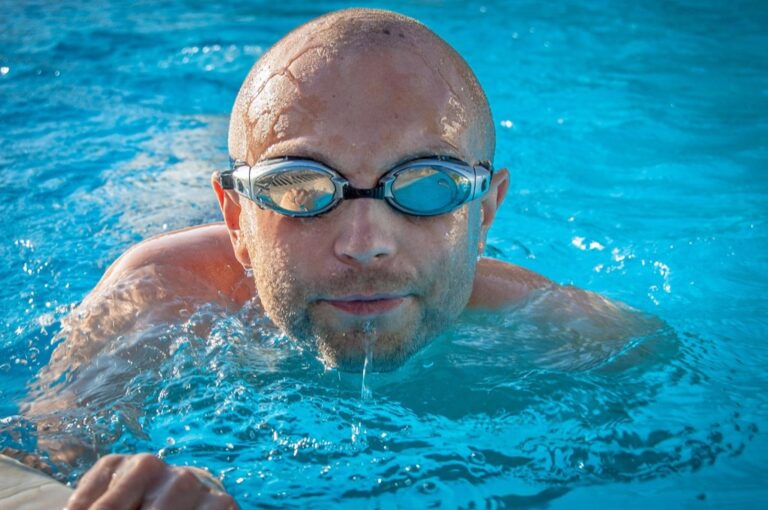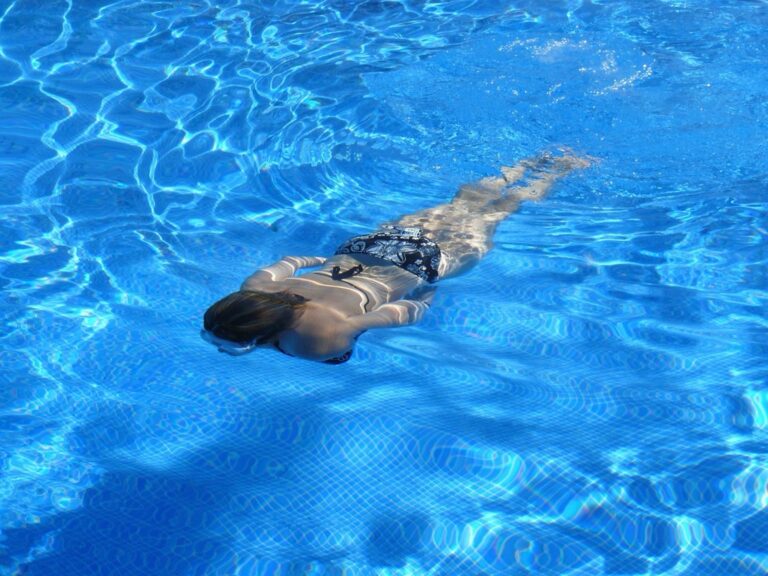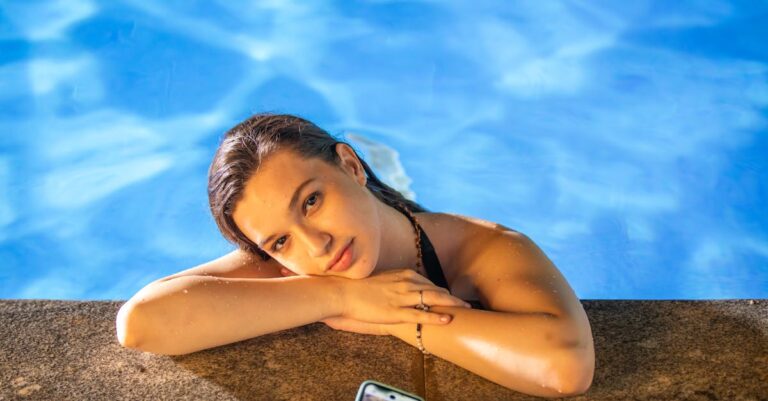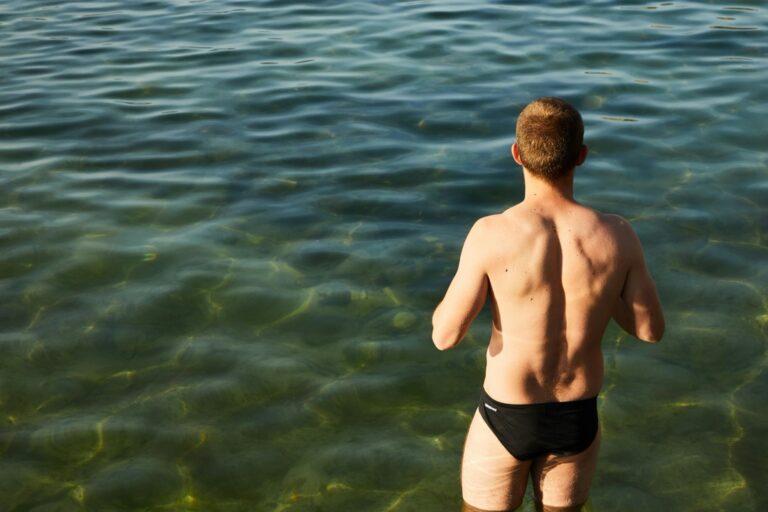7 Key Differences: Open Water Swimming vs Pool Sessions You Must Master
Discover the 7 key differences between open water and pool swimming, from navigation challenges to safety concerns, helping you adapt your technique for both environments.
Diving into open water swimming after training exclusively in pools can feel like entering an entirely different sport. The controlled environment of lane lines and clear water suddenly gives way to murky depths, unpredictable conditions, and no walls to grab for a quick rest.
Whether you’re a competitive triathlete or simply looking to expand your aquatic horizons, understanding the fundamental differences between these two swimming environments can significantly impact your performance and enjoyment. From navigation challenges to temperature variations, the transition requires specific mental and physical adaptations that many swimmers underestimate.
Disclosure: As an Amazon Associate, this site earns from qualifying purchases. Thank you!
Understanding the Fundamentals: Open Water Swimming vs Pool Sessions
When you transition from the controlled environment of a pool to open water, you’re essentially entering a different swimming dimension. Pool sessions offer predictability with clear water, controlled temperatures, and structured lanes. In contrast, open water swimming presents a dynamic environment where conditions constantly change. The fundamental difference lies in the controlled versus uncontrolled nature of these two swimming environments, affecting everything from your technique to your mental approach.
Swimming in natural settings requires adaptability and awareness that simply isn’t necessary when training between lane lines. You’ll need to develop navigation skills, adjust your breathing pattern, and prepare for variable water conditions that pools simply don’t present. Understanding these core differences is essential before diving deeper into the specific challenges each environment offers.
1. Environmental Conditions: Nature’s Variables vs Controlled Settings
Dealing With Weather Elements in Open Water
Open water swimmers face constantly changing weather conditions that directly impact their experience. Wind creates surface chop, challenging your stroke technique and breathing rhythm. Sunshine affects visibility through glare, while rain can reduce sightlines and alter water surface tension. Unlike pools, you’ll need to monitor weather forecasts before sessions and develop adaptability to handle sudden changes during your swim.
Temperature Fluctuations: Adapting to What Nature Provides
Pool temperatures typically maintain a consistent 78-82°F range, while open water can vary dramatically based on season, depth, and currents. You might encounter frigid 55°F spring conditions or comfortable 75°F summer waters in the same location. Your body requires different acclimation strategies for each temperature range, from gradual exposure for cold water to proper hydration for warmer swims. This natural variability demands both mental and physical adaptation.
2. Navigation Challenges: Sighting vs Lane Lines
Developing Effective Sighting Techniques for Open Water
Open water swimming demands mastery of sighting – lifting your eyes above water to spot landmarks while maintaining momentum. You’ll need to practice “alligator eyes” by lifting just your goggles above the waterline every 6-12 strokes. Position natural landmarks like trees, buildings, or buoys to guide your course without zigzagging, which adds unnecessary distance to your swim.
The Luxury of Visual Guidance in Pool Swimming
In pools, navigation becomes almost automatic with lane lines guiding your path. You’ll benefit from the black line painted at the bottom of each lane providing constant directional feedback. Wall targets and T-markers eliminate guesswork about distance and turning points. This structured environment allows you to focus entirely on technique and pace rather than where you’re heading.
3. Distance Perception: Endless Horizons vs Measured Lengths
Mental Strategies for Managing Unknown Distances
Open water swimming fundamentally changes how you perceive distance. Without wall markers or lane lines, your 1500m swim might feel endless. Successful open water swimmers develop mental chunking—breaking the course into manageable segments using buoys or landmarks. Focusing on your stroke count rather than distance can create rhythm and prevent the overwhelming sensation of swimming into the abyss.
The Psychological Comfort of Counted Laps
Pool swimming offers the psychological security of precise measurement. You’ll always know exactly how far you’ve gone and how much remains. This constant feedback creates natural interval opportunities and clear progress markers. The predictable environment helps swimmers maintain consistent pacing and develop a reliable internal clock—something that’s significantly harder to achieve in open water’s unpredictable conditions.
4. Swimming Technique Adaptations: Choppy vs Calm Waters
Swimming techniques that work perfectly in a controlled pool environment often require significant adjustments when facing the dynamic conditions of open water. Your body position, stroke mechanics, and overall approach need modifications to navigate effectively through unpredictable waters.
Stroke Modifications for Open Water Efficiency
In open water, you’ll need a higher arm recovery and stronger catch phase to power through waves and currents. Modify your freestyle with a slightly wider arm entry and deeper pull to maintain stability in choppy conditions. Breathe bilaterally (both sides) to adapt to wave directions, and incorporate a more pronounced body roll to generate momentum while conserving energy in challenging waters.
Maintaining Perfect Form in Pool Conditions
Pool swimming allows you to focus on technical perfection with consistent streamlining and precise movements. You can maintain a horizontal body position with minimal drag, execute symmetrical arm strokes, and utilize the wall for structured turns and pushoffs. Regular feedback from lane lines and bottom markers helps you refine your technique with each lap, creating muscle memory for efficient swimming mechanics.
5. Safety Considerations: Natural Hazards vs Lifeguarded Environments
Safety concerns differ dramatically between open water and pool environments, with each presenting unique challenges that swimmers must understand and prepare for.
Risk Assessment and Safety Planning for Open Water Swims
Open water swimming exposes you to numerous natural hazards including currents, tides, and marine life. Water conditions can change rapidly, requiring constant vigilance and adaptation. Always check weather forecasts, swim with partners, and research local conditions before entering unfamiliar waters. Wearing a brightly colored swim cap and using a tow float increases your visibility to boaters and provides emergency flotation if needed.
Stay visible and safe in open water with the JOTO swim buoy. This lightweight, inflatable float tows behind you without drag and features an adjustable waist belt for a comfortable fit.
The Security Network of Pool Facilities
Pool environments offer structured safety systems with lifeguards trained specifically for contained water emergencies. Clear water visibility allows immediate identification of swimmers in distress. Emergency equipment like rescue tubes and AEDs are readily available at most facilities. Pool rules and lane organization minimize collision risks, while water quality is consistently monitored and maintained through chemical treatment and filtration systems.
Get pure, healthy water with the NSF certified iSpring RCC7AK reverse osmosis system. It features a patented faucet design for easy installation and adds essential minerals for a balanced pH.
6. Training Focus: Endurance vs Technical Precision
Building Mental and Physical Stamina for Open Water Events
Open water training prioritizes endurance development essential for managing extended periods without rest. You’ll need to build mental fortitude to handle isolation and variable conditions while swimming continuously without wall breaks. Training typically involves longer, uninterrupted sets that simulate race conditions, gradually increasing distance and intensity to prepare both mind and body for the sustained effort required in open water competition.
Refining Technique and Speed Work in Pool Sessions
Pool training excels at technical refinement through structured, controlled repetition. You can focus on specific stroke mechanics, precise turns, and targeted speed work with immediate feedback from coaches or pool markers. Short, high-intensity intervals with defined rest periods allow you to perfect your form while building explosive power. The controlled environment enables you to break down complex movements and build efficiency through drills impossible to execute effectively in dynamic open water conditions.
7. Equipment Needs: Survival Gear vs Training Tools
Essential Safety Equipment for Open Water Swimming
Open water swimming demands gear that prioritizes survival in unpredictable environments. You’ll need a brightly colored swim buoy for visibility and emergency flotation, along with a wetsuit appropriate for water temperature. Anti-fog goggles with wide peripheral vision and UV protection are non-negotiable for sighting. Consider swim caps in high-visibility colors, waterproof GPS devices, and earplugs to prevent infections in natural waters.
Improve your swim technique with this durable EVA foam pull buoy. It elevates your hips and legs for proper alignment, allowing you to focus on stroke and rotation while building upper body strength.
Specialized Training Equipment for Pool Improvement
Pool sessions focus on technique refinement with specialized training tools. You’ll benefit from pull buoys to isolate upper body strength and kickboards for leg-focused drills. Swim paddles help develop proper hand positioning and increase resistance for strength building. Training snorkels allow you to concentrate on body rotation without breathing interruptions, while tempo trainers provide audible pacing cues to develop consistent stroke rhythm.
Conclusion: Bridging the Gap Between Both Swimming Environments
Embracing both pool and open water swimming enhances your overall aquatic experience. The structured environment of the pool builds your technical foundation while open water challenges develop your adaptability and mental resilience.
Your approach to each environment should reflect its unique demands. Prepare for open water sessions with safety gear and navigation practice. Use pool time to refine technique through focused drills and intervals.
By understanding these seven key differences you’ll make a smoother transition between environments. Remember that skills from both settings complement each other—pool precision enhances open water efficiency while open water adaptability brings confidence to your pool training.
Whether you’re targeting competition or personal enjoyment you’ll find that mastering both worlds makes you a more complete swimmer.
Frequently Asked Questions
What are the main differences between pool swimming and open water swimming?
The main differences include environmental conditions, navigation challenges, distance perception, technique requirements, safety considerations, and equipment needs. Pools offer controlled environments with clear water and structured lanes, while open water presents dynamic conditions with temperature variations, currents, and navigation challenges. Open water requires adaptability and awareness skills that aren’t as critical in pool swimming.
Do I need to adjust my swimming technique for open water?
Yes, you’ll need to modify your technique for open water swimming. This includes adopting a higher arm recovery, stronger catch phase to power through waves, wider arm entry for stability, and practicing bilateral breathing. These adjustments help you navigate unpredictable conditions effectively while conserving energy, unlike the technical precision focus of pool swimming.
How should I navigate during open water swimming?
Develop effective sighting techniques by periodically lifting your eyes above water to spot landmarks while maintaining momentum. Practice the “alligator eyes” technique where you raise just enough of your head to see forward without disrupting your body position. This prevents zigzagging and helps maintain a straight course, unlike pool swimming where lane lines guide you automatically.
What safety precautions should I take for open water swimming?
Always swim with partners, check weather forecasts, and research local conditions before entering unfamiliar waters. Wear brightly colored swim caps and use tow floats for visibility and emergency flotation. Be aware of natural hazards like currents, tides, and marine life. These precautions are crucial since open water lacks the structured safety systems and lifeguard supervision of pools.
Enjoy comfortable and durable swimming with this soft silicone cap. It stretches easily for a snug fit and protects hair without pulling.
What equipment do I need specifically for open water swimming?
Essential open water equipment includes a brightly colored swim buoy for visibility and emergency flotation, a wetsuit for temperature regulation in colder waters, and anti-fog goggles for improved sighting. Consider a silicone cap for insulation and earplugs to prevent swimmer’s ear. This equipment differs from pool-focused training tools like pull buoys and kickboards.
How can I improve my distance perception in open water?
Use mental chunking by breaking the course into manageable segments using buoys or landmarks. Focus on stroke count to maintain rhythm and gauge progress. Practice swimming without wall markers in training to develop a better feel for distance. This helps overcome the psychological challenge of swimming without the precise measurements that pools provide.
Should my training differ for open water versus pool swimming?
Yes, open water training should prioritize endurance development with longer, uninterrupted sets that simulate race conditions and build mental fortitude. Incorporate practice for navigation and variable conditions. Pool training, however, excels at technical refinement through structured repetition and allows for high-intensity interval work that’s difficult to execute effectively in open water.
How do I handle temperature variations in open water?
Gradually acclimate your body to different water temperatures through progressive exposure. Invest in appropriate thermal protection like wetsuits for cold conditions or consider cooler swimwear for warmer waters. Develop mental strategies to manage the initial shock of temperature changes. Unlike pools with stable temperatures, open water requires both physical and psychological adaptation to temperature fluctuations.







